Investment and innovation are ensuring Lapland’s airports are ready not only for harsh weather, but for an increasing number of visitors, writes Tom Batchelor.
Finland’s Lapland region is known for its pristine wilderness, ethereal Northern Lights – and wintry conditions that can make running an airport complex and unpredictable. So the Nordic nation's world-renowned ‘snow-how’ is vital to ensure runways and taxiways belonging to a network of airports within the Arctic Circle are kept open.
Over the last 12 months this northern European winter wonderland has experienced a record-breaking tourism boom that is putting additional pressure on Lapland's airports. They must now handle not only the inevitable harsh winter conditions, but the hundreds of thousands of visitors that pass through.
Driving tourism
Finavia, the state-owned public company responsible for maintaining and developing Finland's airport network, has invested around €100m into Lapland's airports over the past decade to help the region grow its tourism industry – and the programme is beginning to bear fruit.
The 2023/24 winter season will see a major increase in seats and international routes connecting Finavia’s six Lapland airports to destinations across Europe. Some 18 new European routes will open over the winter, bringing Lapland’s total number of direct international routes to 35.
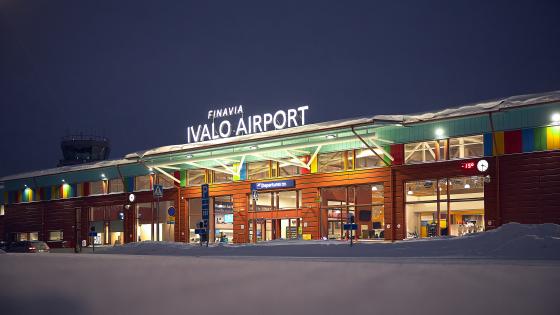
Ivalo is the northernmost airport in both Finland and the European Union
Rovaniemi Airport (RVN), which serves Lapland’s capital, has, alone, added 12 new international routes, giving it 23. RVN is the third busiest airport in Finland, serving more than 560,000 passengers in 2022.
“We have lots of fresh air, lots of space, stunning nature, and especially during the winter time there is huge growth potential,” said Jani Jolkkonen, Finavia's senior vice-president, airport network and deputy CEO.
Speaking to Airports International at Routes World 2023, he said: “Even though the recovery rate is around 70% in Finavia, in Lapland we recovered fully last winter and we will see growth over the coming winter.
“Before the pandemic, lots of tourism came from Asia. Now Asia is only a marginal part of the total passenger volumes. The UK, Spain, Germany and France have compensated for the passengers we have lost. The question is, how long is this flight ban over Russia going to continue? When it's gone, hopefully tourism from Asia will come back. Then we will see really big growth.”
In total, the number of seats provided by airlines is forecast to rise by 240,000 over winter 2023/24, a rise of 16%. Of the increase, approximately 150,000 seats will be on flights to and from Rovaniemi Airport.
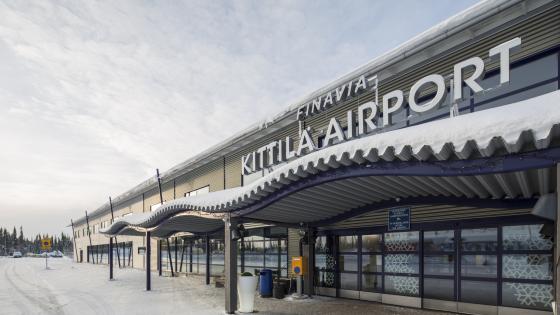
Kittilä handles general aviation and mostly seasonal international traffic
Fit for purpose
Underpinning this sustained growth in air travel demand has been a programme of airport upgrades across Finland’s frozen north.
The bulk of the investment in Lapland’s airports came in 2018/19, when €55m was spent by Finavia. RVN received just under half of that sum, with €25m channelled into improving the passenger experience, including a new terminal extension. The airport benefited from: 5,000m2 of additional space, increasing the total footprint to 10,500m2; ten new passport control lines (50% more than previously); three new departure gates (one bridge gate and two bus gates, adding 150% capacity); six new check-in lines (75% more); and one new security control line ( an increase of 33%). The expansion has increased the hourly landing rate from three to five. A luggage centre extension was also added alongsidea new restaurant and gift shop.“A whopping 5,000m2 of new space, a significant increase in passport control, check-in and security control lines, new departure gates and an expanded luggage system provide a smoother travel experience and elevate the services of Rovaniemi Airport to a new level. We have substantially increased our capacity and efficiency,” said Finavia’s Johan Juujärvi, manager of Rovaniemi Airport.
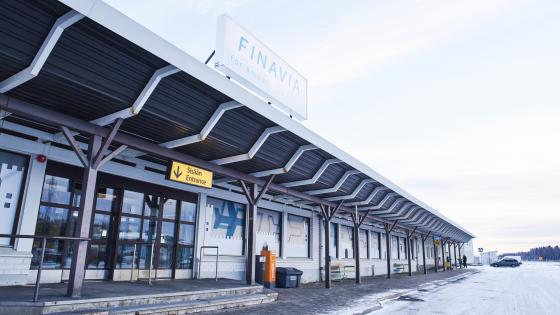
Situated on the coast of the Bay of Bothnia, Kemi-Tornio Airport serves business travellers and tourists heading to Southern Lapland
Lapland drives growth
Kittilä (KTT), Ivalo (IVL) and Kuusamo (KAO) have also seen remarkable growth amid a surge in demand for holidays in Lapland, despite the Russian airspace closure having put the brakes on Finland’s overall aviation growth.KTT, which processed 337,000 passengers in 2022, making it the 4th busiest airport in Finland (Helsinki and Tampere are in first and second place), was connected to the UK with two new easyJet routes from Manchester and London Gatwick over the winter, in addition to Air France’s Paris route, Eurowings’ Düsseldorf route, Air Baltic’s Riga route and Lufthansa’s Munich route.
Kittilä Airport was allocated €20m, with the terminal growing in size by 2,000m2, a 20% increase. The airport also benefited from two new taxiways and four additional aircraft stands (a growth of 50%). In addition, the number of aircraft stands was increased from six to 12, and a new short taxiway has been built, creating another access point to the runway and giving greater flexibility. Ivalo Airport, Finland’s northernmost airport, attracted a €10m investment and saw the number of aircraft stands nearly doubled, with passenger facilities expanded by 1,000m2. Ivalo and Kuusamo will benefit from Swiss airline Edelweiss Air's services from Zurich, starting in February 2024, and Lufthansa services from Frankfurt. Eurowings has also launched flights from Düsseldorf to both destinations.
Snow-how pays
Key to sustaining this growth is providing reliable operations year-round. “Our goal is safe and smooth air traffic in all weather conditions and all seasons,” said Jani Elasmaa, Finavia’s vice president responsible for runway and apron operations. “This requires our world-renowned snow-how.”
Finavia gets valuable help from the Finnish Meteorological Institute, which provides accurate, up-to-date information on weather phenomena influencing air traffic. The country’s airport network also benefits from the latest in snow clearing equipment – and a willingness by the Finavia team to trial new technology.
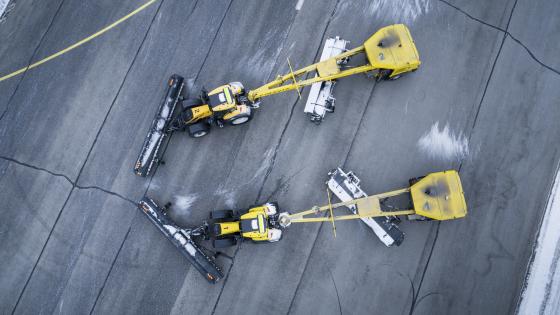
The Snowbot trial involved autonomous tractors making the snow clearance effort more efficient
In the winter of 2018/19, Ivalo hosted the Runway Snowbot experiment, which saw autonomous tractors used to make the snow clearance effort more efficient. The project was a joint operation between five companies: Finavia, Valtra, Neste, Nokian Tyres and Vammas.
Two Valtra T254 Versus each pulled a 4.5m wide Vammas sweeper blower. The perimeter-sensing vehicles followed an optimised, predefined route to make sure the runway was safe for the next aircraft to land. If the tractor was low on fuel, it could refill itself with low-emission renewable diesel.
The pilot project was a success, although it has yet to be rolled out more widely. Jolkkonen said: “It was very interesting, but the technology is still developing. Even though the runways are fenced areas and therefore easy places to start this kind of pilot, to make it work and to compensate for the lack of manual input there are a lot of things to work through.”
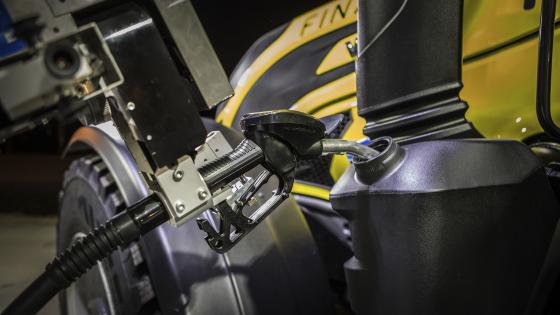
If the Snowbot ran low on fuel, the tractor could refill itself with low-emission renewable diesel
“Our mission is to safeguard operations throughout the whole year,” he added. "Of course, it's different to work in winter conditions with lots of snow, but we are professionals and we have been doing that for decades. There's nothing new in that for us and we use different equipment to fulfil that mission.”
Eco advancements
Part of the recent investments were used for environmental protection. All of Finavia’s airports achieved carbon neutrality in 2019, and the reduction of the carbon footprint of the airports in Lapland has been recognised under the international ACA (Airport Carbon Accreditation) certification system. Rovaniemi, Kittilä, Ivalo and Kuusamo have all now been accredited to the highest level (Level 4+). Helsinki Airport was certified in 2017.
Finavia will reduce carbon emissions from its operations to net zero by 2025 and the company’s next goal is to achieve zero emissions at its airports by 2030. Rovaniemi, Kittilä, Ivalo and Kuusamo are all due to reach net zero emissions by the end of 2023.
